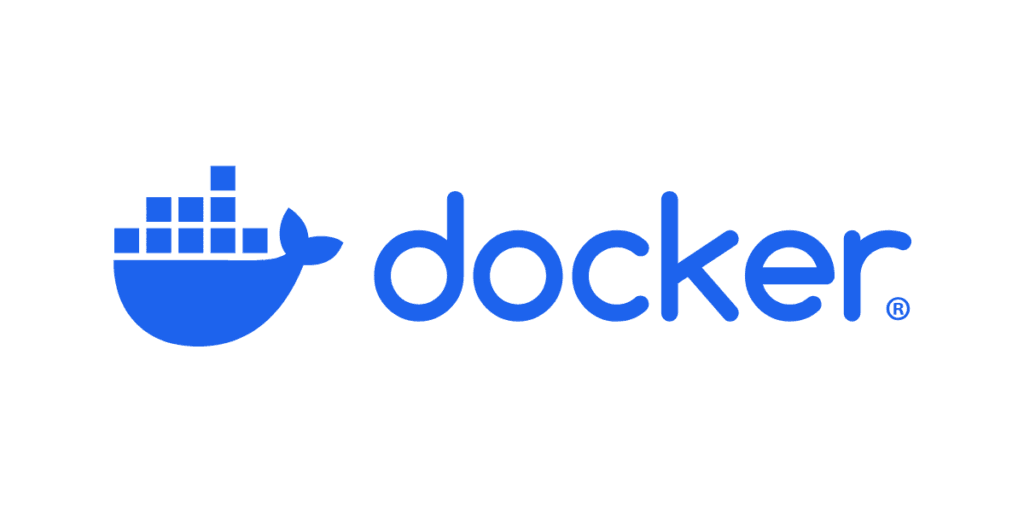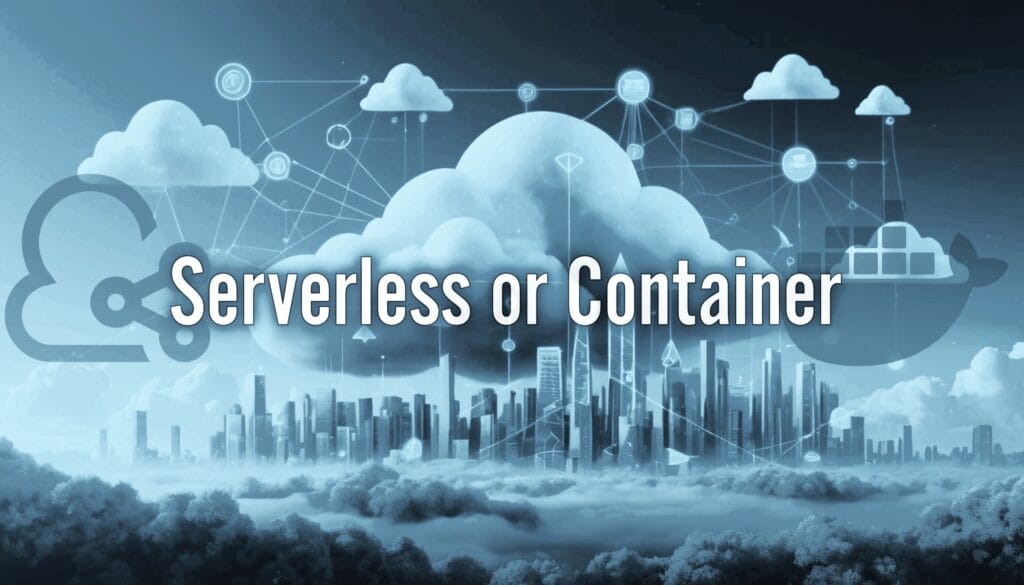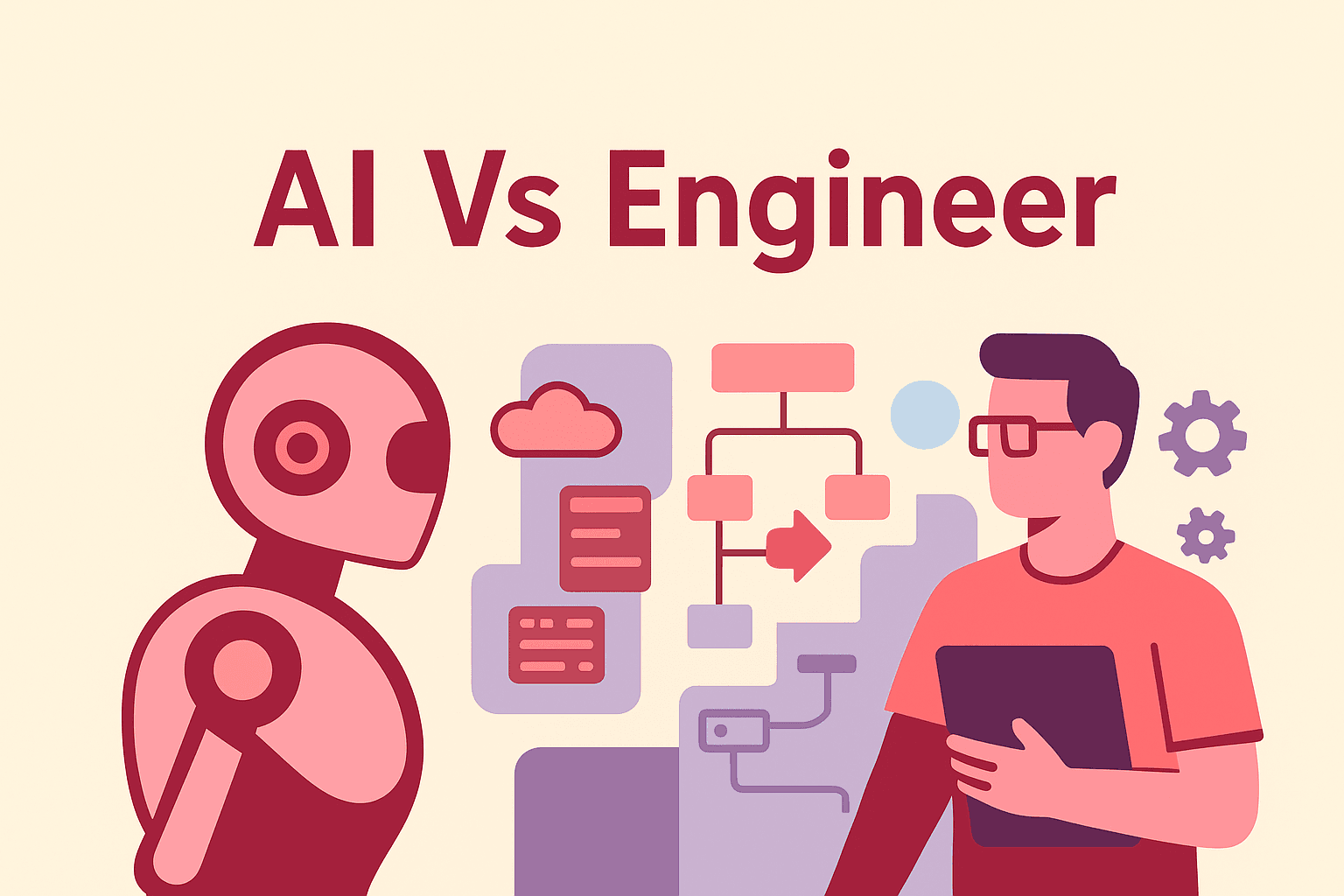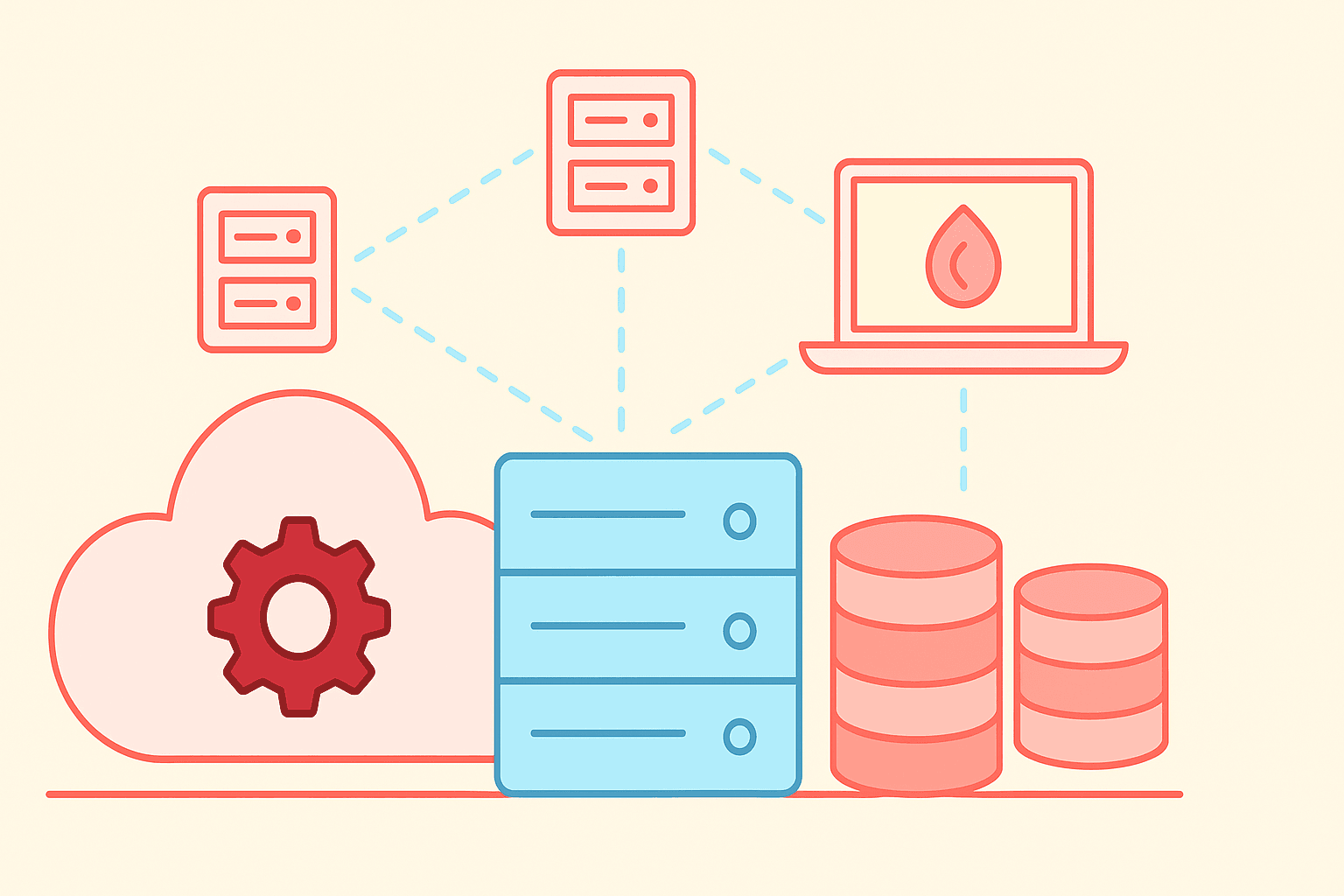Choosing between serverless and containers for our latest project was no easy task. On paper, serverless offered an undeniable advantage: nearly 40% savings in infrastructure management time, thanks to its fully managed nature. That kind of operational efficiency was hard to ignore.

Yet, the decision wasn’t straightforward. Serverless promised automatic scaling, seamless updates, and no resource management headaches. Containers, on the other hand, offered lightweight execution and the ability to run multiple applications on a single machine without interference. The pay as you go pricing model of serverless was enticing, while containers provided greater control over deployment strategies across diverse environments.
Our requirements were clear, we needed an architecture that would hold up in 2025’s evolving tech landscape. We analyzed performance, scalability, and cost considerations in different scenarios, from handling unpredictable traffic spikes to maintaining long running applications.
Evolution of Cloud Computing Architectures in 2025
The cloud landscape has undergone a seismic shift. We’ve witnessed firsthand the rise of serverless and containers as dominant solutions for scalable application development.
From Monolithic to Microservices: A Brief History
The monolithic era where entire applications were bundled into a single codebase quickly revealed its limitations. Long deployment cycles and interdependent services meant even minor updates required coordination across multiple teams. The shift to microservices changed everything.
Domain driven design (DDD) introduced us to “bounded contexts,” breaking applications into modular, independent components. The transformation was akin to organizing a chaotic workshop into neatly arranged tool stations every component had its designated place and function.
Why Containers & Serverless Lead the Pack
The arrival of Docker was a game changer. It provided a standardized way to package applications along with their dependencies. Kubernetes soon followed, becoming the go to orchestration platform. By 2025, containers had become the preferred approach for microservices architectures.

Serverless, despite emerging later in the game, gained rapid traction. AWS Lambda captured our attention, allowing us to focus purely on code execution without concerning ourselves with infrastructure. However, the choice between serverless and containers was never black and white. Containers offered more control, while serverless eliminated operational complexity. Cloud providers blurred the lines further with hybrid solutions like AWS App Runner, which merged the best of both worlds.
Market Trends: Who’s Leading the Charge?
The data speaks for itself. The serverless market is projected to surge from $21.9 billion in 2024 to $44.7 billion by 2029, with an annual growth rate of 15.3%. Some sources even estimate this figure as high as 23.17%.
Containers are experiencing steady adoption as well. A recent survey showed 31% of organizations are already leveraging containers for cloud deployments, with another 28% planning to join them soon. Particularly notable was the increase in serverless container usage, which jumped from 31% to 46% between 2023 and 2025.
AWS continues to dominate the serverless space, holding approximately 70% of the market, though Azure and Google Cloud are catching up. Their respective serverless adoption rates increased by 6% and 7% in the past year, while AWS grew at a more modest 3%.
Most enterprises we’ve spoken to employ a hybrid strategy, using both containers and serverless in tandem. Given that 70% of organizations now operate across both public and private clouds, it’s evident that cloud architecture has evolved beyond a one-size-fits-all solution.
Core Technical Differences: The Battle of Performance and Scalability
Our technical deep dive revealed fundamental distinctions between these two paradigms differences that extended far beyond deployment methodologies and into real world performance implications.
Runtime Environment: Containers vs Serverless
Containers encapsulate applications and their dependencies into self sufficient units, sharing the underlying OS kernel. This allows multiple applications to run on the same machine without conflicts.
Serverless, by contrast, abstracts away the execution environment entirely. The cloud provider provisions resources dynamically, and functions remain stateless between executions. This architecture simplifies development but introduces challenges around state persistence and caching.
Resource Allocation: Precision vs. Automation
- Serverless: Resources are provisioned dynamically, with automatic scaling based on demand. The cost savings are significant, as charges apply only during execution.
- Containers: Resources must be pre defined, with manual scaling or automated scaling via Kubernetes. While this grants greater control, it also requires careful resource planning.
Cold Start Latency: A Persistent Concern
Cold starts remain a key issue for serverless computing. Our benchmarks indicate cold starts range from 100ms to over 10 seconds depending on function complexity. Functions remain warm for roughly 15 minutes before incurring fresh start up delays.
Containers, once deployed, maintain consistent performance without unexpected latency spikes. This makes them more suitable for applications requiring real time responsiveness.
CPU and Memory Utilization: Optimized Workloads
- CPU-Intensive Tasks: Containers excel at computationally heavy workloads, such as AI model training and high performance computing. Serverless functions, constrained by memory to CPU ratios, struggle with long-running processes.
- Memory Efficiency: Containers allow granular memory allocation and efficient resource sharing. Serverless, bound by fixed memory tiers, provides less flexibility.
- I/O Performance: While both technologies offer low-latency read operations (~10ms), serverless exhibits higher write latencies (~30ms), which can add up over thousands of operations.
Scalability and Elasticity: Which Model Scales Better?
Scaling behaviors differ significantly between serverless and containers:
- Auto-scaling: Serverless automatically scales thousands of instances near-instantly, requiring zero manual intervention. Containers scale horizontally but require predefined scaling rules, making them less reactive to sudden surges.
- Concurrency Handling: AWS Lambda supports up to 1,000 concurrent executions per region, scaling at a rate of 1,000 new instances every 10 seconds. Containers provide custom concurrency limits but demand active monitoring.
- Provisioning Speed: Serverless can provision 6,000 new environments per minute, while containers depend on orchestration strategies and available resources.
When to Use Serverless or Container-Based Architecture?

Choosing the right architecture depends on your specific use case. Below are three expanded scenarios that highlight the strengths of each approach.
Serverless vs Containers: Quick Comparison
| Category | Serverless | Containers |
|---|---|---|
| Deployment Model | Function-based (FaaS) | Application-based (Microservices) |
| Resource Management | Fully Managed by Cloud Provider | User Managed (via Kubernetes, Docker, etc.) |
| Scalability | Auto-scaling, Near-Instant | Manual or Automated via Orchestrators |
| Startup Latency | Cold Start Issues (100ms–10s) | No Cold Starts After Deployment |
| Cost Model | Pay-per-Use | Pay-per-Resource (Always On) |
| Portability | Limited (Vendor-Lock) | Highly Portable Across Environments |
| State Management | Stateless | Stateful & Stateless Supported |
| Performance | Best for Event-Driven Workloads | Ideal for Long-Running, CPU-Intensive Tasks |
| Security & Compliance | Provider-Defined | Fully Customizable |
| Operational Overhead | Minimal | Requires Orchestration & Monitoring |
Scenario #1: App Modernization
Organizations looking to modernize legacy applications must weigh the benefits of cost, performance, and maintainability.
- Serverless benefits: Offers improved agility and scalability, allowing companies to rapidly deploy and iterate on their applications. It also minimizes operational overhead, leading to better cost efficiency.
- Container-based benefits: Provides better consistency, control, and resource efficiency. This makes it ideal for organizations that need to maintain customized environments while leveraging microservices architectures.
Scenario #2: Cloud-Migration Transformation
Migrating to the cloud requires careful consideration of portability, security, and scalability.
- Serverless benefits: Reduces operational overhead by offloading infrastructure management to cloud providers. It is also well suited for event driven scalability, ensuring optimal performance during peak usage periods.
- Container-based benefits: Ensures greater portability and predictability, making it easier to migrate applications across different cloud platforms or hybrid environments. Containers provide fine-grained control over deployments, which is crucial for enterprises with stringent security or compliance requirements.
Scenario #3: Event-Driven or High-Traffic Applications
Applications that require real-time processing or experience unpredictable traffic patterns need an architecture that can handle dynamic workloads efficiently.
- Serverless benefits: Offers seamless integration with cloud services and provides robust autoscaling capabilities. It is ideal for use cases such as IoT event processing, real-time analytics, and content distribution networks.
- Container-based benefits: Excels in event driven processing, providing better portability and performance predictability. It is particularly effective for applications that need to run consistently across multiple environments, such as multi region deployments or on premises integrations.
Conclusion: Choosing the Right Tool for the Job
The key takeaway? Serverless and containers aren’t competitors, they’re complementary.
Serverless thrives in event driven applications, unpredictable workloads, and auto scaling environments. Containers, with their fine tuned resource control, remain indispensable for CPU intensive tasks and real time applications. Looking ahead, we anticipate further refinements serverless addressing cold start challenges, containers streamlining orchestration complexity. The decision isn’t just about raw performance; it’s about aligning architecture with workload characteristics. The future lies in a hybrid approach, leveraging the strengths of both paradigms for maximum efficiency.
Additional Takeaways
Future Trends: The Road Ahead for Serverless & Containers
As we move deeper into 2025 and beyond, the serverless vs container conversation is evolving into something broader a convergence rather than a conflict. Several emerging trends are shaping how organizations approach cloud-native architectures:
1. Rise of Hybrid & Multi-Cloud Architectures Companies are increasingly adopting hybrid strategies, blending serverless and container workloads across public, private, and edge environments. Cloud vendors are now offering seamless integrations (like AWS App Runner and Google Cloud Run) to simplify hybrid deployments.
2. Serverless Containers: The Best of Both Worlds Solutions like Azure Container Apps and AWS Fargate are gaining traction, merging serverless scalability with container flexibility. These platforms aim to eliminate the operational overhead of Kubernetes without sacrificing portability.
3. Cold Start Minimization & Performance Enhancements Cloud providers are aggressively working on reducing cold start times in serverless environments through innovations like provisioned concurrency and snapshot based bootstrapping.
4. Standardization & Interoperability Projects like Knative and OpenFaaS are leading efforts to standardize serverless frameworks, making it easier to deploy serverless workloads on any container platform, improving vendor neutrality.
5. AI & Event-Driven Workloads Expansion As AI/ML workloads and real time applications continue to surge, serverless will evolve to handle more complex, data intensive workflows. Containers will simultaneously adopt advanced GPU, FPGA, and specialized hardware integrations for heavy processing tasks.
6. Green Cloud Computing With sustainability becoming a priority, both serverless and container ecosystems are focusing on energy efficient infrastructure. Expect future platforms to offer eco friendly scaling options, optimized for lower carbon footprints.




